You may have noticed a change underway in your city lighting. High pressure sodium lights, with their familiar orange glow, are quickly being replaced by new, energy efficient blue-white LED (light emitting diode) lighting. Is this the beginning of a new assault on the night or an opportunity to use light more wisely? Many of us first became aware of LEDs in amplifiers, computers and the flashlights we use for seeing our star charts at night. More recently, LEDs became a big hit with Christmas lighting. And why not? Although they cost considerably more, the bulbs last much longer, use a fraction of the energy compared to incandescent and sodium lighting and don’t contain materials like mercury – common in fluorescent lighting – that can harm the environment. A typical incandescent bulb lasts about 750 hours while an LED bulb can glow for up to 50,000 hours. What’s not to like?
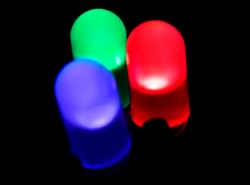
The changeover to LED street lighting is already underway in my own city of Duluth, Minn. U.S. I noticed this one night this fall while driving home from work. Buildings and intersections that had been orange the night before were bathed in a far more intense blue-white light. Don’t get me wrong. Our city engineers deserve high marks for adhering to good lighting standards by packaging the new lights in shielded housings with minimal light spill upwards and to the sides. Light in those directions not only creates unwanted glare but seriously brightens the night sky, robbing many of the joys of stargazing.
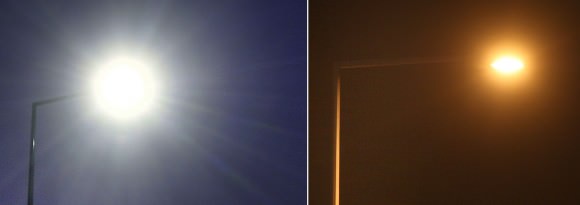
Still, everything was not OK. The LED street lights were INTENSELY bright, much more so than the “old-fashioned” sodiums. Looking up was like staring into the sun. If you have the opportunity, step under an orange sodium street light and then under an LED. You’ll be amazed at the difference in light intensity. To gauge the approximate difference in brightness between the two, I pulled out my camera and took a light meter reading on the pavement beneath an LED lamp and then under a high-pressure sodium lamp. The LED was brighter by more than more than one camera “stop” or more than twice as bright.
You can’t complain about the color rendition – the whiter LED light is far better – but the increased intensity doesn’t bode well for stargazers.
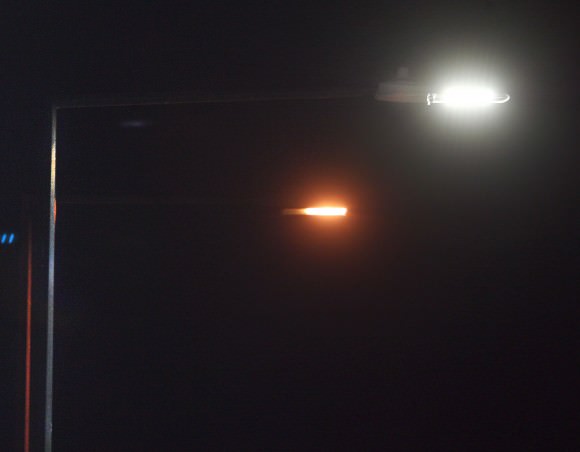
As long as LEDs are shielded, light spill and glare are relatively well-controlled, but light reflected from the ground also goes up into space to light the sky. Here in the northern U.S. where snow typically covers the ground from November through March, winter night skies are the most light polluted; LED street lighting will only exacerbate the situation.
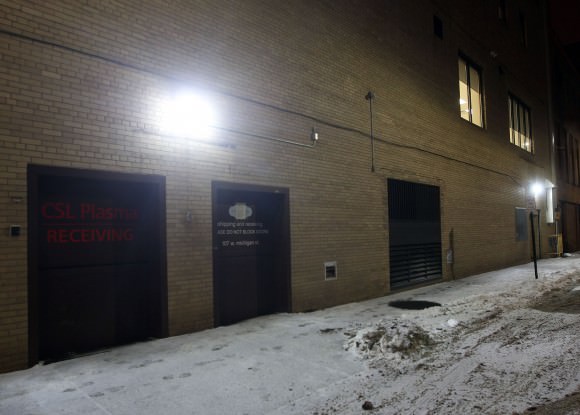
In the big picture however, that’s only a minor headache. LEDs are a wonderful technology, but the benefits they provide in cost savings and long life ultimately guarantee their proliferation in ornamental, building and parking lot illumination. Much of that lighting is unshielded and heavy on glare, making driving at night more difficult, wasting energy and preserving what dark sky remains more challenging. Indeed, the transition is already underway.
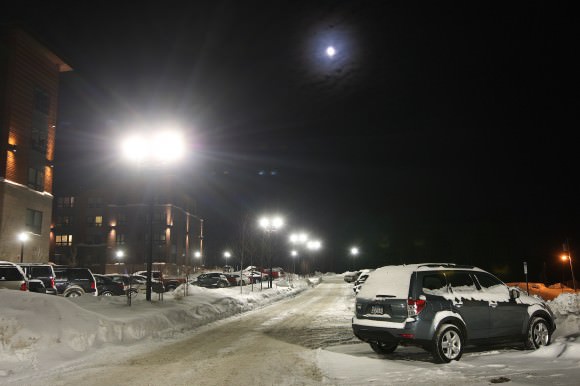
Like an outbreak of mushrooms, LED “wall pack” lights – the ones that shine directly outward without any shielding – have started to appear on the outside walls of buildings as a cheap solution for lighting up walkways and parking lots. They’re replacing the equally bad but half as bright sodium lamps. Ornamental LED lamps in a new housing development in town recently turned night into day. Residents complained and wrote letters to the editor. To their credit, the owners dimmed the lights, but the fixtures were poorly designed to start and still too bright for many.
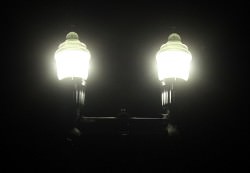
One additional issue with LED ornamental and street lighting has to do with color. Although natural color LED lighting is available, high-efficiency LED lights emit a much bluer light than sodium vapor. Blue-rich light not only increases the amount of glare sensed by the human eye but also the amount of visible light pollution. Other effects of light trespass and glare include sleeping problems and even an increased risk for certain cancers. We humans need the night more than we know.
LEDs are only part of the problem of course. The real issue is the ever-increasing amount of light pollution worldwide and the potential for new LEDs to make it worse. True, we can take advantage of the ability to adjust and dim current lighting to more suitable levels. LEDs are also highly directional, making it easy to point them just where they’re needed. Finally, new high-efficiency more natural (less blue) LEDs are now available that can help reduce light pollution.
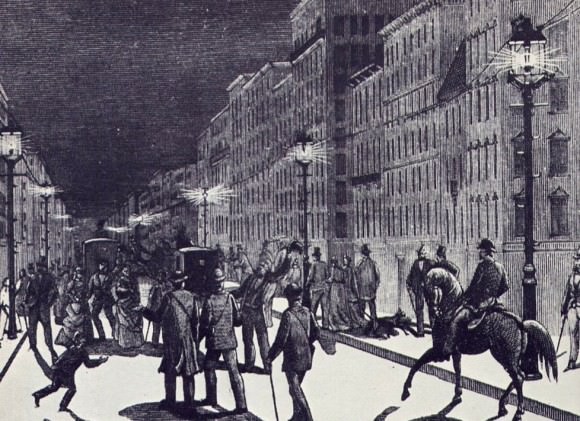
I encourage everyone to learn all you can about the new lighting and work with you local city councils and town boards to use the light wisely, particularly in new developments, parking lots and for building illumination. There’s no question that LED lighting can be used wisely to make everyone happy – stargazers, drivers, shoppers and walkers. For help and more information, the International Dark-Sky Association (IDA) is a great place to start. Here are some additional resources:
* IDA Simple Guidelines for Lighting Regulations for Small Communities, Urban Neighborhoods and Subdivisions – Great background information on what you’ll need to know before you approach your town board
* Sample Light Ordinances
* Great examples of dark sky compliant ornamental LED light fixtures

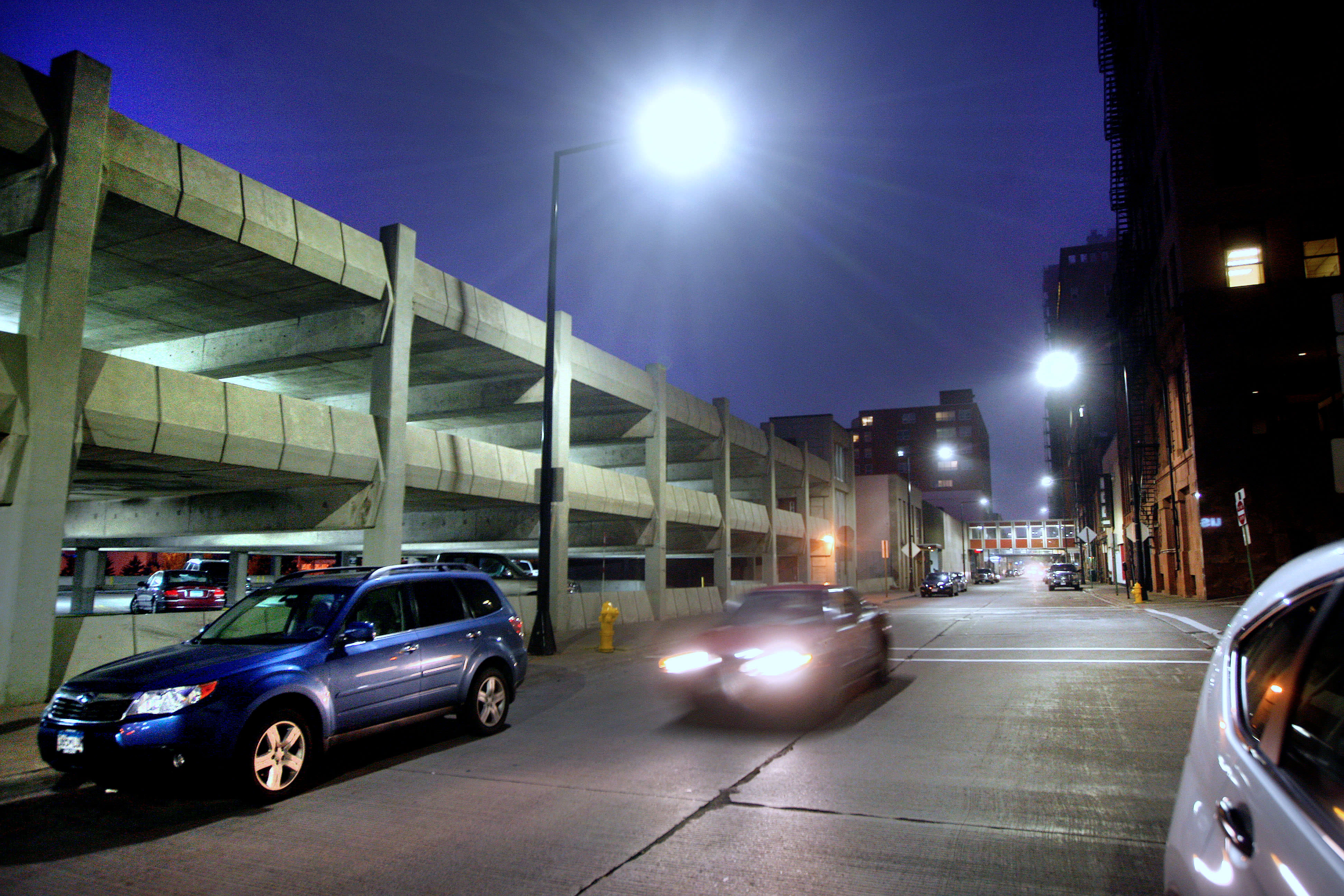
Omitted from the article were long-time adverse health effects of light
pollution. Bright artificial lights at night ARE injurious to human
health, reducing the body’s ability to create melatonin. The short of
it: turning night into day is extremely unhealthy, for the environment,
for animals, and especially for humans. It’s not worth it.
We do light up the night for safety reasons, however. We’ll have to make adjustments in health care and home design to compensate for changes in activity. Being able to “go dark” at the right time is still a choice for most people who can afford curtains.
I disagree. The idea of sleeping with extra light shining in being bad for you is a farce – much like how people in the 1700’s thought night air was bad for you – brought on by the fact that the majority of people work during the day and sleep at night.
I have worked night shift for 13 years straight. I sleep regularly with daylight coming in through my windows and have no negative effects. I’m perfectly healthy, go to my doc regularly. The people who speak loudly about how they can’t do the shift simply haven’t worked it long enough to get used to it. Sleeping during the day when you are used to sleeping at night? Of course that’s hard! But bad for your long-term health because of the light coming in? No, no, no.
Artificial lights at night disrupting natural, health providing melatonin, something that we have evolved to depend on for millions of years, is no farce.
The International Agency for Research on Cancer (IARC) of the UN recently recognized shift-working as a class 2A probable human carcinogenic risk factor.
Kloog, et al.’s Chronobiology International, 28(1): 76–80, (2011) paper “Does the Modern Urbanized Sleeping Habitat Pose a Breast Cancer Risk?” found a significant positive association in a general population between bedroom light (“sleeping habitat”) and ambient nighttime light (light pollution) levels with breast cancer risk, providing evidence that the relative risk of BC appears to increase in more illuminated sleeping environments.
Schernhammer reported in “Rotating Night Shifts and Risk of Breast Cancer in Women Participating in the Nurses’ Health Study” (Journal of the National Cancer Institute, Vol. 93, No. 20, October 17, 2001) that because permanent night workers do not completely entrain to their circadian shift rhythm, the average serum melatonin levels among these women would be lower than those of never workers. According to the “melatonin hypothesis”, which states that certain aspects of modern life, such as light at night, may increase breast cancer risk, the permanent night worker would, therefore, be at higher breast cancer risk than a never worker. However, rotating shift workers would still remain at the highest overall risk, because they cannot entrain to their circadian shift rhythm at all and, therefore, would have the lowest melatonin levels.
Verkasalo et al, found that blind women have half the rates of breast cancer as fully sighted women. See “Inverse association between breast cancer incidence and degree of visual
impairment in Finland”. British Journal of Cancer 1999; Vol 80, pg 1459-60.
The pathways from blue lights at night to increased incidence of breast cancers is better figured out than what has been done with prostate cancers in men, but there too correlations have been found.
You should really reconsider your life choices.
I think the danger in that comes from rotating shifts and odd shifts. People aren’t being allowed to settle into a sleep pattern. That’s the problem, not light.
“You should really reconsider your life choices.”
Yeah, you keep living in that fantasy world where the world just stops at bedtime and restarts in the morning. We’ll just turn off all the power plants and hospitals and police and ambulance coverage and late night TV, okay? People HAVE to do these things.
In my town (Colchester, UK) they’re turning the lights off at night except on major roads and some junctions. Great for seeing the night sky, terrible for finding your way home from the pub. 🙂
At these times of transition to vastly more energy efficient lighting, it’s a shame that light pollution seems to be an after thought and not considered as important as the economics. I hope this doesn’t become a wasted opportunity.
God, how do you see the squaddies coming in the dark…
Ha ha! As good soldiers always do, they see you first – after all, they have night vision goggles.
This is like eating twice as much diet food because it’s only half the calories, why up the flux if the Sodiums were bright enough?. The colour issue is also a big one. Research has shown that we should be seeing more reddish light as we head for sleep and blueish light causes unwanted wakefullness, a good reason not to use your laptop before you (try to) sleep. Bluish light will disrupt people’s circadian rhythms, which could have truly disastrous consequences.
Get some cheap sunglasses…
Half of all life begins its daily activities at sundown, 30% of vertebrates, 60% invertebrates. Our lights is impacting their lives. It grossly benefits predators, creating a negative pressure on prey species, that will only in turn, recoil against predators down the road.
Are you going to sunglasses for them too?
It appears that you’ve had a sense of humour malfunction… I posted that picture in jest; it’s a reference to the ZZ Top song.
Sodium vapor lights use twice the electricity and have to be replaced three times over the lifetime of a single LED streetlamp. So the savings are very significant. Electricity and maintenance costs are lower. Some LED streetlamps have motion sensor dimmers to reduce the electricity used even further and by running dimmed gives them a longer lifespan. Also dimming lowers the glare. Newer LEDs have addressed the blue light issue.
There have been red and yellow LEDs since the 70s, but no switch was made then to utilize them then. They’re only being switched to BECAUSE of their blue content. It is the general population’s ignorance about what blue light does to us and to the environment that makes them so apathetic about the issue. With every lighting efficiency improvement we have ever made, we have NEVER decreased the amount of lumens that are produced. While “newer LEDs have addressed the blue light issue”, ARE municipalities using them? For once a light goes in, it normally sticks around for a decade. Now we have LEDs that can individually last longer than that?
For the past two million years, our species and its ancestors have evolved to depend on nights being dark. A melatonin based circadian system has been found in just about every animal from protozoans to people. Melatonin is described by biologists as the most evolutionary conservative hormone known. Circadian systems are “entrained” or triggered on the blue light of the daytime skies. So anytime blue light enters our eyes, our bodies interpret it to mean its daytime. And all the important health benefits that melatonin gives us, such as cellular clean up, DNA repair, the most potent antioxidant known to clear out our blood of unwanted particles, it turns off other hormones in women that accelerate cancers, and can even cause some cancer cells to commit suicide.
We have just spent decades fighting about smoking. Municipalities are now creating a mandated environment of second-hand smoke that we can’t get away from. This is not progress, this is stupidity writ large and driven by short-sighted, profit hungry thinking.
My own thinking about the reduction in power use with LEDs is two fold: Cost savings is most likely the one you think is first but it isn’t.
I think the biggest reason to shift to LEDs is to lower our environmental damage being done by coal fired power plants. Its not just the burning of coal fouling our air, Its also the mining that is fouling our waterways and creating huge slag piles that future generations will have to deal with. Next is fracking for Natural Gas and Oil. We don’t know the effects of fracking on our water systems and what else is being released by fracking process.
I also see that you missed that LEDs are evolving and now can produce cool white light and warm white lite. The warm white has a reduced blue spectrum.
Then there is a simple solution: go home close your curtains and sleep in a darkened room. That is what I do every night of the year.
I fully appreciate and am aware of the energy efficiencies of LED lights. I also realize that this also means a reduction of CO2 output from the burning of fossil fuels, a reduction of mercury into our atmosphere and ultimately our food, a reduction of possible mountain top removal and new exposure of heavy, toxic metals into our waterways, the reduction of the need to poison our water in the attempt to frack rock to get at hard to reach gas, and the reduction in the amount of waste slag of coal ash. Trust me I am all for it.
But there are two main types of white LED, one that is a blue LED with a white phosphor coating that still emits a majority of its energy as blue light, or the type that has four legs and is three different color LEDs put together, which is more complicated & expensive so it’ll be less likely used. I ask again: While “newer LEDs have addressed the blue light issue”, ARE municipalities using them?
Finally, as for the curtains: half of all life begins its daily activities at sundown, 30% of vertebrates, 60% invertebrates. Our lights is impacting their lives. It grossly benefits predators, creating a negative pressure on prey species, that will only in turn, recoil against predators down the road. Look up sea turtles, fireflies, bats, moths, plants, …
The issue is not just about our wallets!
Acording to Luginbuhl et al. 2013 any other light source it’s worse th HPS or LPS. Even when a long distance, the extinction of the blue sources is greater, this is very similar to that of LPS. So, the only way to reduce light pollution is to use amber LED and / or intelligent LED turn off or greatly reduce their power.
I work nights in Pittsburgh, and it was a bit of a surprise when I looked out the window at work to see the street was white-hued instead of the orange I was accustomed to. That was weird.
Brian Sheen
I am assuming that with down facing street lights it should be possible to treat the city parks as a special case and reduce the light levels dramatically. Clearly this could bring about its own problems but should allow the city dwellers to enjoy at least some of the night sky.
Roseland Observatory.
i wonder if there is any issue with regards to pupillary dilation being harmed by the increased brightness, particularly when moving to a darker area or attempting to view something in an area not bathed by LED light. which could actually harm safety.
also, distractify.com/fun/pranks/letters-between-australian-troll-and-neighbor-over-floodlight/